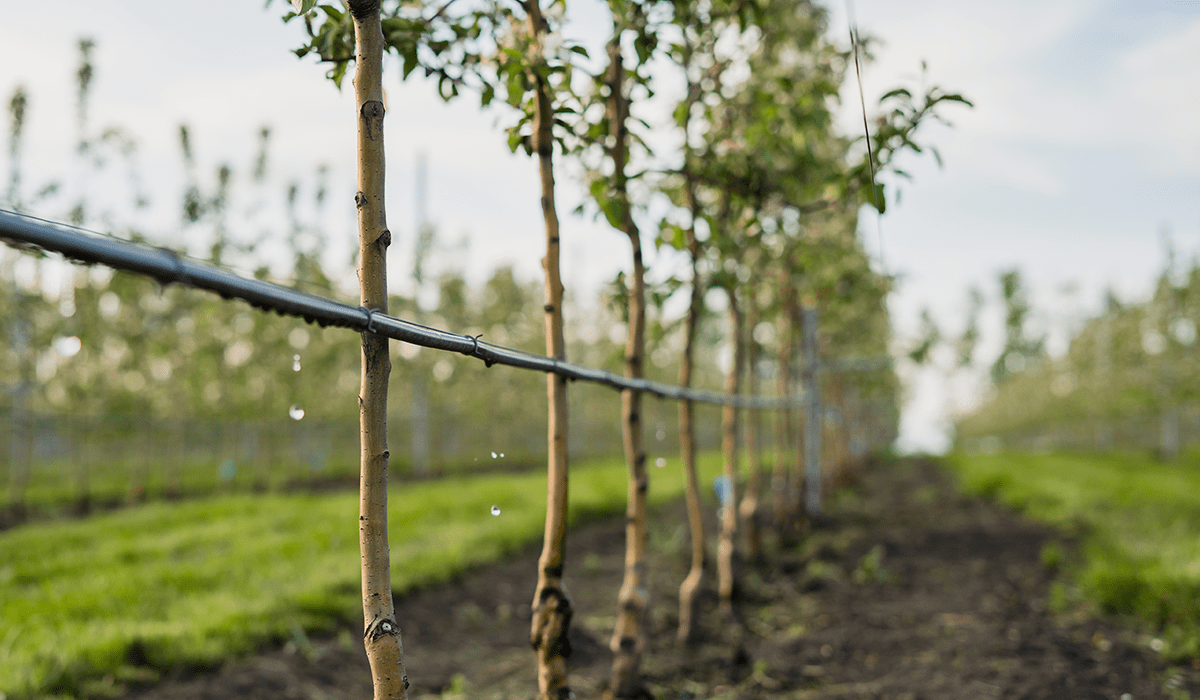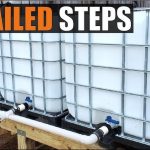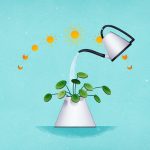Water is the lifeblood of your farm. It’s essential for growing healthy crops and keeping your animals well-nourished.
But with water resources becoming increasingly scarce, it’s crucial to find ways to use this precious resource wisely. Imagine the possibilities when you can conserve water effectively and still maintain a thriving farm. It’s not just about cutting costs; it’s about ensuring the sustainability of your farm for future generations.
You have the power to make a difference. Dive into these simple strategies that can transform your water usage and unlock a new level of efficiency on your farm. Curious to know more? Keep reading, and discover how small changes can lead to big results.

Water-saving Irrigation Techniques
Water is a vital resource for farming, and conserving it is essential. Efficient irrigation techniques can significantly reduce water use on farms. These methods not only save water but also enhance crop growth. By adopting smart practices, farmers can ensure sustainable agriculture.
Drip Irrigation
Drip irrigation uses less water by delivering it directly to plant roots. It minimizes evaporation and runoff, ensuring water reaches where it’s needed. This method suits both large farms and small gardens. It reduces weed growth, as water only targets plant roots.
Soaker Hoses
Soaker hoses are a simple way to conserve water. They release water slowly, soaking the soil around plants. This ensures water penetrates deeply, promoting strong root systems. Soaker hoses are affordable and easy to install. They work best in rows of plants.
Sprinkler Systems
Modern sprinkler systems can be water-efficient. Using timers and sensors helps manage water usage. Sprinklers cover large areas, making them ideal for big farms. Choose low-pressure systems to reduce water waste. Adjust the settings to match specific crop needs.
Rainwater Harvesting
Collect rainwater to use in irrigation. Rain barrels and tanks store water during wet seasons. This method reduces dependency on external water sources. It provides a sustainable water supply during dry periods. Harvested rainwater is chemical-free, benefiting crops and soil.
Mulching
Mulching retains soil moisture and reduces evaporation. It involves covering soil with organic materials like straw or wood chips. This technique keeps soil cool and suppresses weeds. Mulch also improves soil fertility, benefiting plant growth. It’s an easy and cost-effective practice.

Rainwater Harvesting
Collecting rainwater helps farmers save water and money. Use barrels or tanks to store rain from roofs. It’s easy and reduces dependency on other water sources.
Capturing rainwater isn’t just an eco-friendly practice; it’s a smart way to ensure your farm remains resilient and sustainable. Rainwater harvesting allows you to collect and store rain for future use. It’s cost-effective and can significantly reduce your reliance on external water sources. Imagine using the water provided freely by nature to nourish your crops and livestock.What Is Rainwater Harvesting?
Rainwater harvesting involves collecting runoff from roofs or other surfaces and storing it for later use. This practice can be as simple as setting up a few barrels or as elaborate as constructing a dedicated reservoir system. The key is to capture the rain before it becomes runoff and is lost to streams or drainage systems.Benefits Of Rainwater Harvesting
Rainwater is free and abundant in many regions. By collecting it, you’re not only saving money but also conserving a precious resource. Additionally, rainwater is usually free from chemicals found in groundwater, making it ideal for organic farming. It can be a reliable source during dry spells, ensuring your farm remains productive even when rainfall is scarce.Getting Started With Rainwater Harvesting
Begin by assessing your farm’s layout to determine the best places for collecting rainwater. Consider the size of your roof and the average rainfall in your area. These factors will help you decide on the storage capacity you need. A simple setup might include a few rain barrels connected to your downspouts, while a larger operation could involve tanks or ponds.Maintenance Tips
Keeping your rainwater harvesting system in good condition is crucial for its efficiency. Regularly clean gutters and filters to prevent blockages. Check storage tanks for leaks and ensure they are tightly sealed to keep out debris and pests. Consistent maintenance will extend the life of your system and improve water quality.Is Rainwater Harvesting Right For Your Farm?
Consider your farm’s unique needs. If your area experiences frequent rainfall, rainwater harvesting could significantly lower your water costs. However, if rain is scarce, you might need to balance rainwater collection with other conservation strategies. Ask yourself: Can this method help me achieve a more sustainable farming practice? Rainwater harvesting is more than a technique; it’s a commitment to making the most of what nature offers. By investing a little time and effort, you can create a system that pays dividends in water savings and environmental impact. What steps will you take to harness this natural resource on your farm?Drought-resistant Crop Selection
Choosing the right crops can greatly conserve water on your farm. Drought-resistant crops thrive with limited water. This choice helps maintain production during dry spells.
These crops adapt to arid conditions. Their resilience cuts down on irrigation needs. Selecting drought-resistant varieties supports sustainable farming.
Understanding Drought-resistant Crops
These crops grow well with less water. They often have deep root systems. This allows them to access moisture far below the surface.
They are bred to survive in tough conditions. They require minimal irrigation. This makes them ideal for water conservation efforts.
Popular Drought-resistant Crop Options
Some common options include sorghum and millet. These grains need less water than others. Quinoa is another excellent choice.
Consider chickpeas and lentils. These pulses are hardy and resilient. They also enrich the soil with nitrogen.
Benefits Of Drought-resistant Crops
These crops reduce water usage significantly. Farmers can save on irrigation costs. They also help maintain soil health.
Less water use means less energy needed. This can lead to lower operational costs. It also supports environmental conservation.
Tips For Successful Implementation
Research the best crops for your area. Soil and climate play important roles. Consult local agricultural experts for advice.
Start with small test plots. Monitor growth and yields closely. Adjust techniques based on initial results.
Efficient Water Management Strategies
Efficient water management is crucial for the sustainability and productivity of your farm. Implementing smart strategies can help conserve this precious resource while ensuring your crops thrive. Let’s explore some practical ways to make the most of every drop.
Use Drip Irrigation
Drip irrigation delivers water directly to the roots of your plants. This minimizes evaporation and ensures that plants get precisely what they need. It’s a game-changer for reducing water waste and promoting healthy growth.
Monitor Soil Moisture
Using soil moisture sensors allows you to track the exact water needs of your crops. This tech can help you avoid overwatering, saving both water and money. Ever noticed how plants flourish with just the right amount of water?
Implement Rainwater Harvesting
Collecting rainwater is a simple yet effective method. It provides an additional water source during dry spells. Imagine utilizing nature’s bounty to keep your farm resilient and thriving.
Create Contour Farming
Planting along the natural contours of your land reduces runoff. This strategy helps water stay where it’s most needed, encouraging better absorption. Have you tried observing how water naturally moves across your farm?
Mulch Your Crops
Mulching protects soil moisture by reducing evaporation. It also suppresses weeds and adds nutrients to the soil. Think of it as a protective blanket for your crops.
Schedule Irrigation Wisely
Watering during cooler parts of the day, such as early morning or late afternoon, can reduce evaporation. This timing ensures that water reaches your plants more effectively. Could tweaking your irrigation schedule make a difference?
Efficient water management is not just about conserving resources but also enhancing your farm’s productivity. By integrating these strategies, you can make a significant impact on both your farm and the environment. How will you start today?

Conclusion
Water conservation on your farm is vital. Simple changes make a big difference. Start by fixing leaks. Use drip irrigation to save water. Collect rainwater for future use. Plant drought-resistant crops to reduce water needs. Monitor soil moisture to avoid over-watering.
These steps protect water resources and ensure farm sustainability. Every drop counts. Implement these practices today. Make your farm more efficient and eco-friendly. It’s not just about saving water. It’s about securing your farm’s future. Your efforts contribute to a healthier planet.
Embrace these simple ways and inspire others to do the same.



